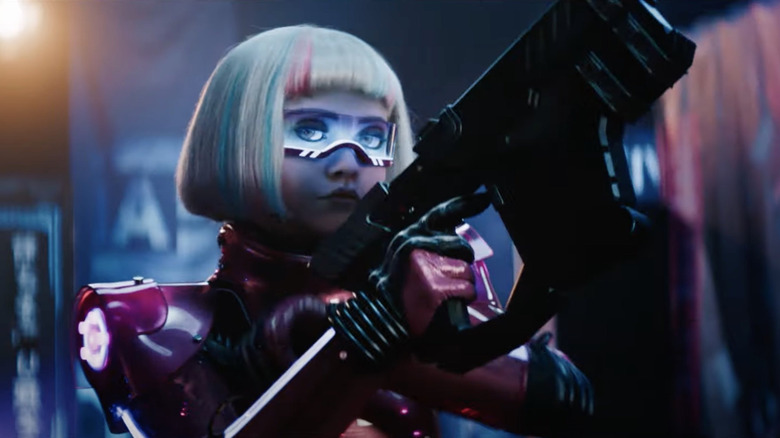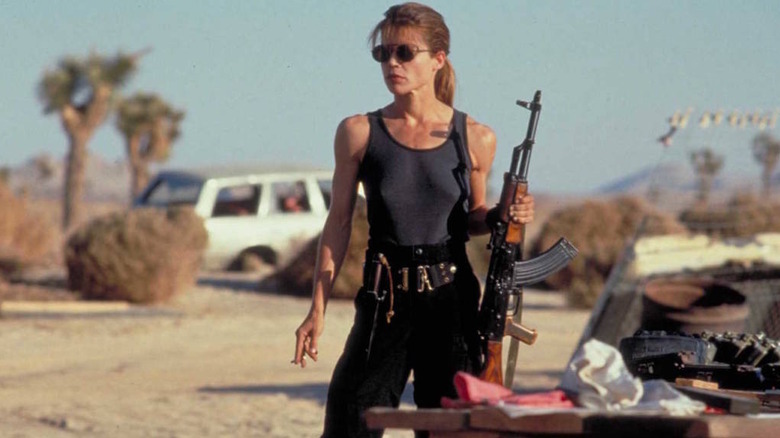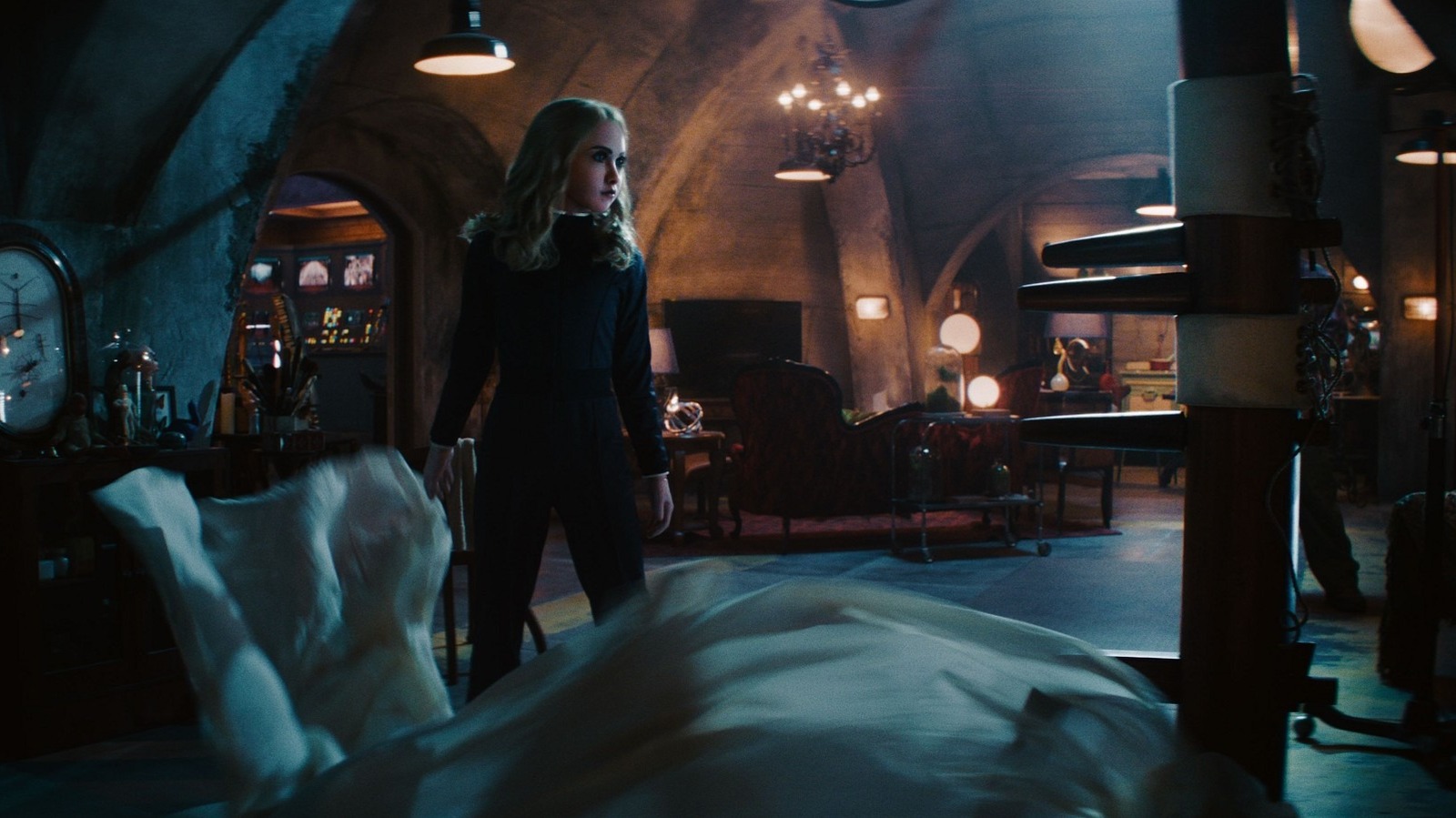M3GAN is now the hero, just like the T-800 in Terminator 2

Universal Pictures
The most obvious “T2” homage in “M3GAN 2.0” is also the simplest: both sequels pull off the neat trick of making the first film’s villain into the hero. Ironically, even though both series are about sentient humanoid robots, this switch isn’t arrived at in the same fashion. In the original “The Terminator,” the T-800 (Arnold Schwarzenegger) sent to kill Sarah Connor (Linda Hamilton) is thoroughly destroyed at the end of the film, which means that the T-800 sent to protect young John Connor (Edward Furlong) from another new breed of Terminator, the T-1000 (Robert Patrick), is essentially a brand new character. Yet, because he’s the same model of Terminator as the first film, and has only been reprogrammed by a future John to be sent back in time as his younger self’s protector, this T-800 bears enough resemblance to the original Terminator for the switcharoo to have some emotional weight.
Meanwhile, “M3GAN 2.0” makes clear from the start that this film’s M3GAN (played by Amie Donald and Jenna Davis) is the same character. Although M3GAN was thought to be destroyed after the first movie, it turns out that she found a way to keep her source code alive, unbeknownst to her creator, Gemma (Allison Williams), or the girl she was paired with, Cady (Violet McGraw). The first movie saw M3GAN go through an evolution of murderous self-awareness akin to HAL 9000 (or the other “Child’s Play”), but “M3GAN 2.0” continues and deepens the first film’s theme of responsibility in parenting by positing that M3GAN isn’t inherently evil, just improperly “raised” by Gemma, who realized too late that she built M3GAN to be a replacement parent. Thus, the sequel’s M3GAN is a more mature individual, her growth paralleling how Cady is now a more independent young teen.
So, when Gemma and Cady discover that the secret government android assassin named AMELIA (Ivanna Sakhno) (who was created thanks to someone stealing Gemma’s research) is on a mission to eliminate everyone responsible for her existence, M3GAN decides to become a kind of family member to Gemma and Cady rather than an overbearing protector, thus making her more of a heroine. Although this change is more character-based, it has reverberations for the entire film. Similar to the way “T2” turned the action-horror of “The Terminator” into more pure sci-fi action, “M3GAN 2.0” steers away from the first film’s “living doll” horror into more sci-fi and anime-inspired action.
M3GAN 2.0 echoes Terminator 2 in character development and a nuanced look at technology

Tristar
M3GAN isn’t the only character who undergoes further development in the sequel, however. In addition to Cady growing up and becoming more independent and strong (both literally and figuratively), Gemma finds some reconciliation with her old nemesis M3GAN when the latter is temporarily implanted inside the former’s brain. It’s a dynamic that recalls Sarah Connor learning to respect the reprogrammed T-800. Additionally, just as Sarah discovers herself nearly turning into a Terminator when she tries to assassinate the architect of Skynet, Miles Dyson (Joe Morton), Gemma finds herself enhanced with M3GAN-like powers at one point, further blurring the line between former nemeses-turned-teammates.
That concept feeds into a main thematic interest featured in both “T2” and “M3GAN 2.0,” which is a more nuanced look at the problems of unchecked Artificial Intelligence. In “Judgement Day,” although the machines created in the future on behalf of the rogue AI program Skynet are still thought of as antagonists, the morality is less cut and dried when the continual warmongering nature of humanity, as well as its blindness when it comes to the application of new technologies, are taken into consideration. With the first “M3GAN” tackling some preliminary questions about the rise of AI as an everyday assistant, “2.0” dives even further into the debate about its unregulated usage versus its rampant proliferation. While its conclusion may not be satisfying to everyone, it fits with the series’ theme of humanity needing to be a responsible parent to its creations, which is as much Mary Shelley as it is James Cameron.
Although “M3GAN 2.0” has quite a bit more going on plot and tone-wise than “T2” does — this article doesn’t even touch upon the continuing elements of camp and satire that carry on from the original — it nonetheless proves that using Cameron’s film as a template for an inventive sequel is still more than viable. In an IP-obsessed industry still so beholden to source material, “M3GAN 2.0” cleverly reiterates the mantra of “Terminator 2,” which is that there’s truly no fate but what we can make for ourselves.



